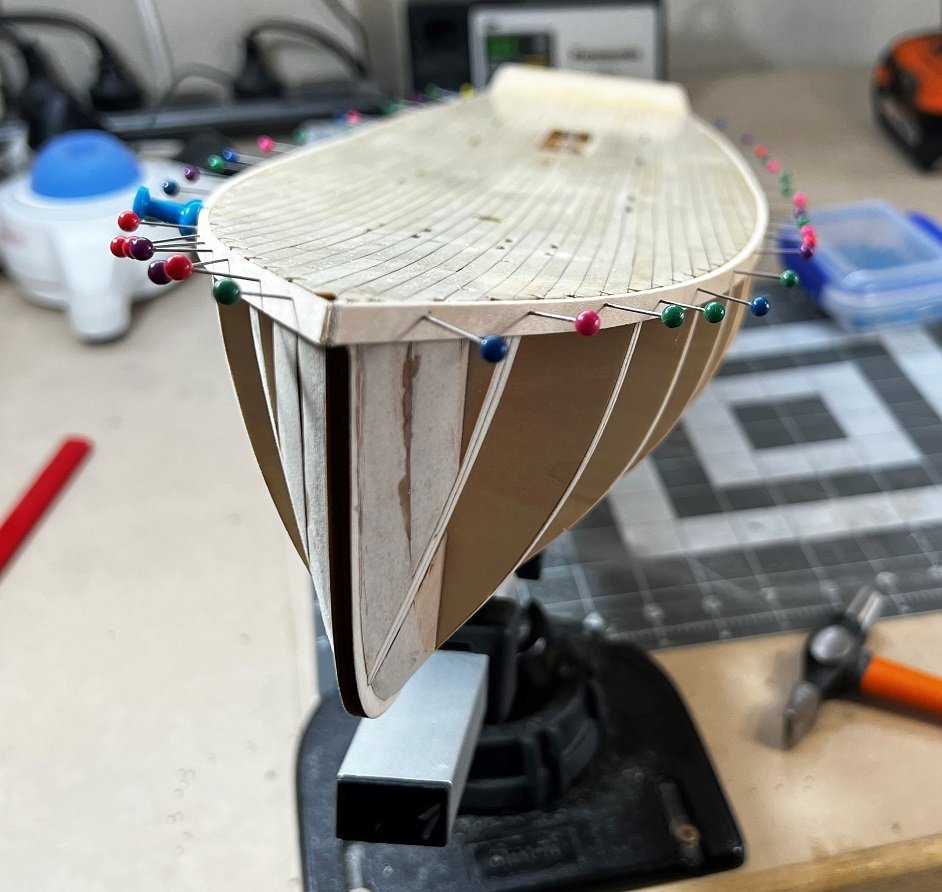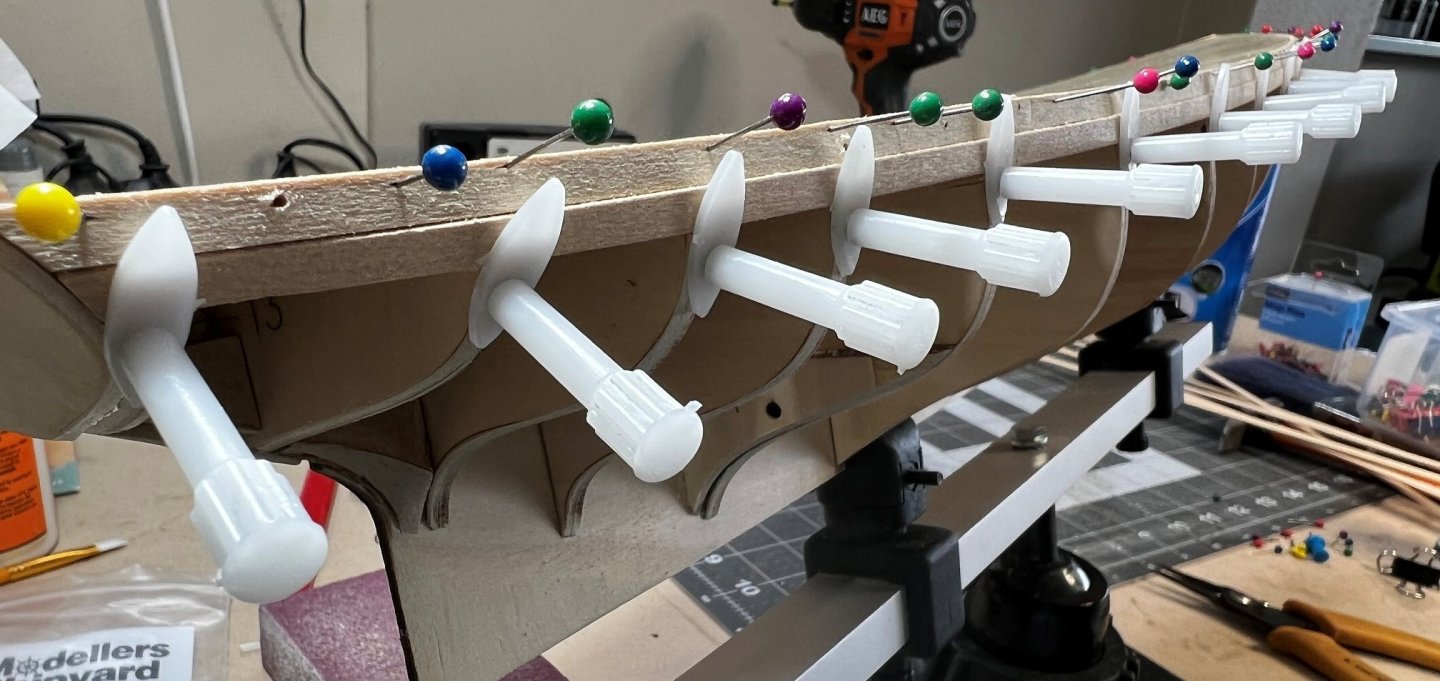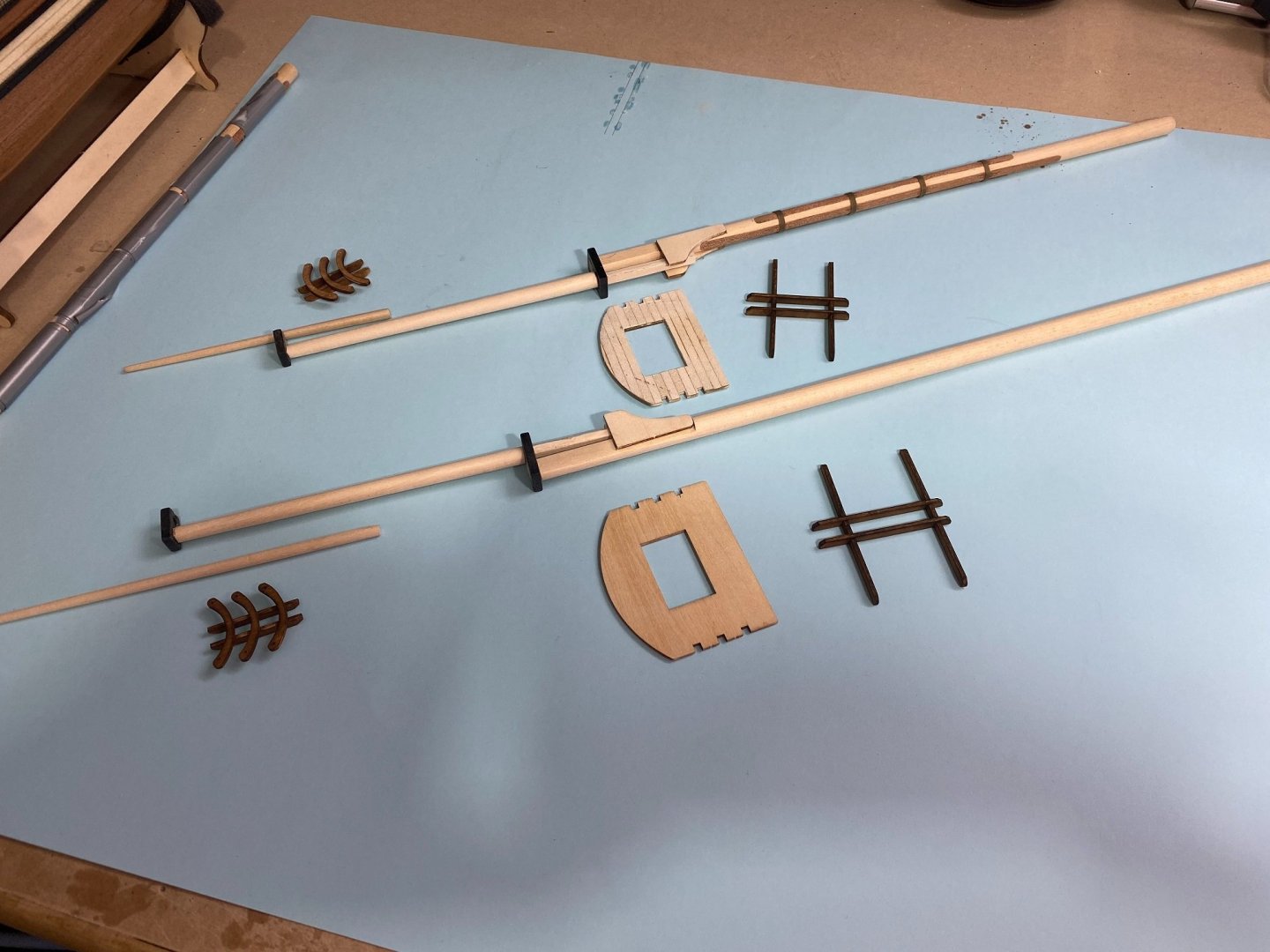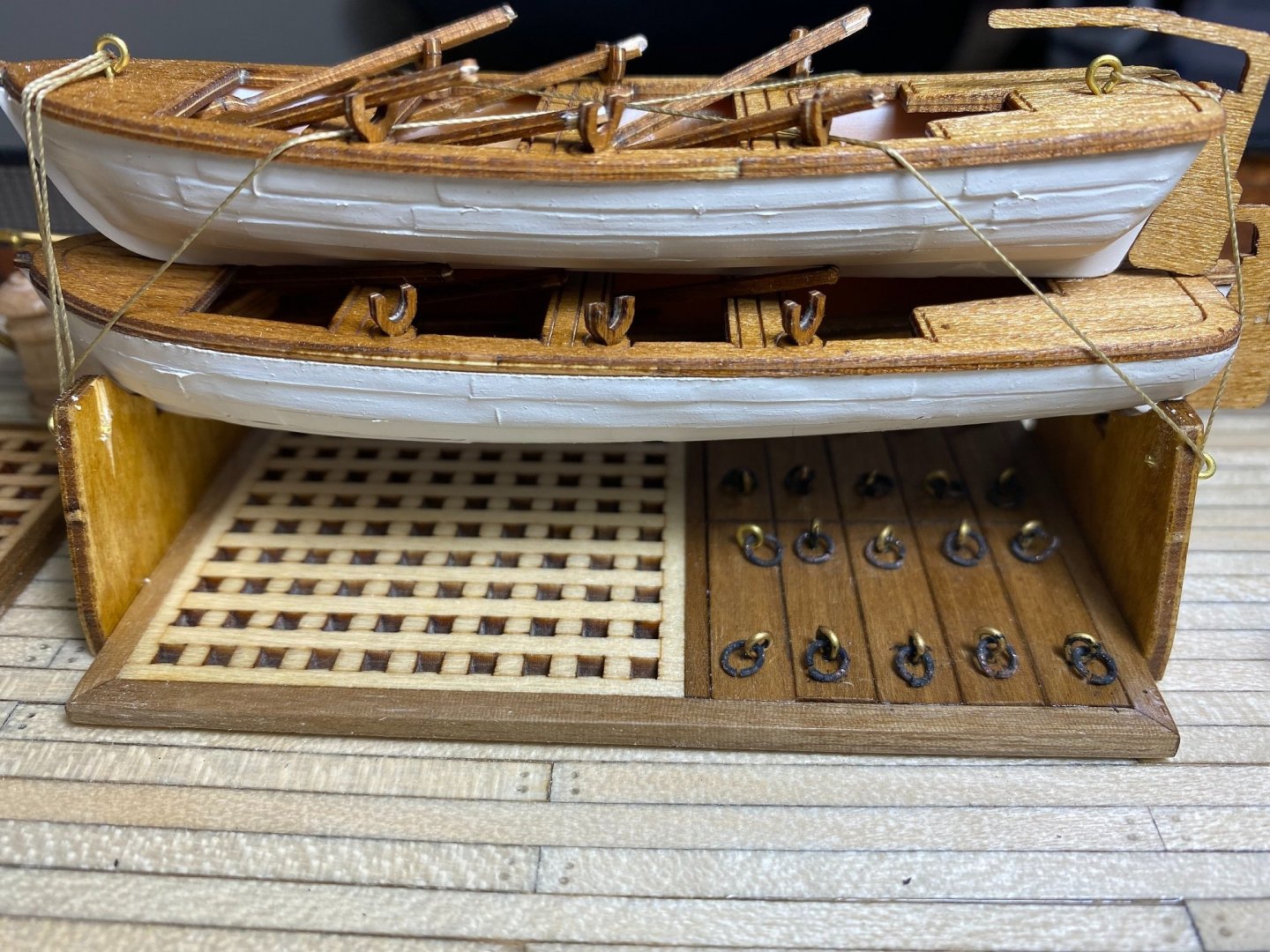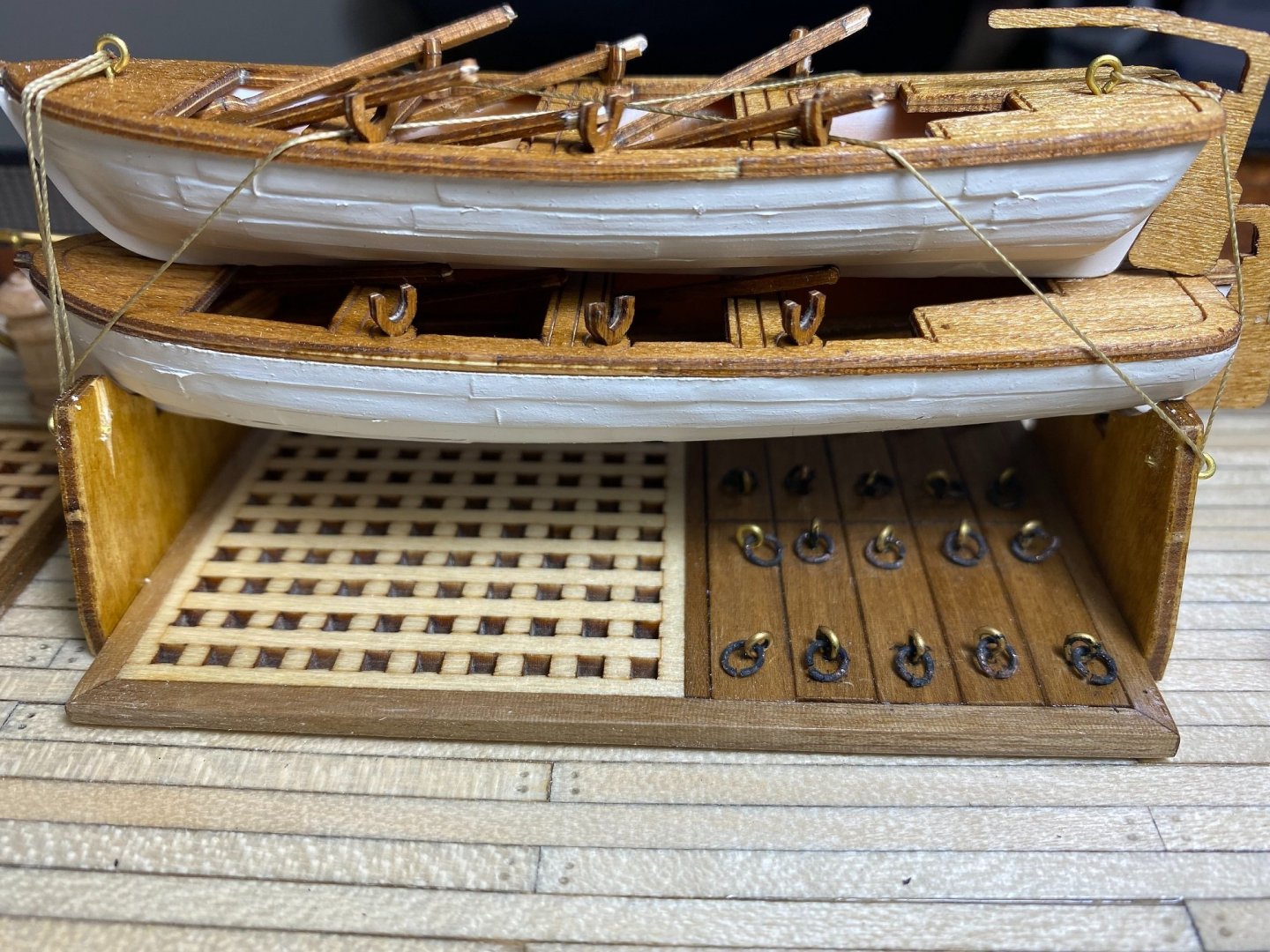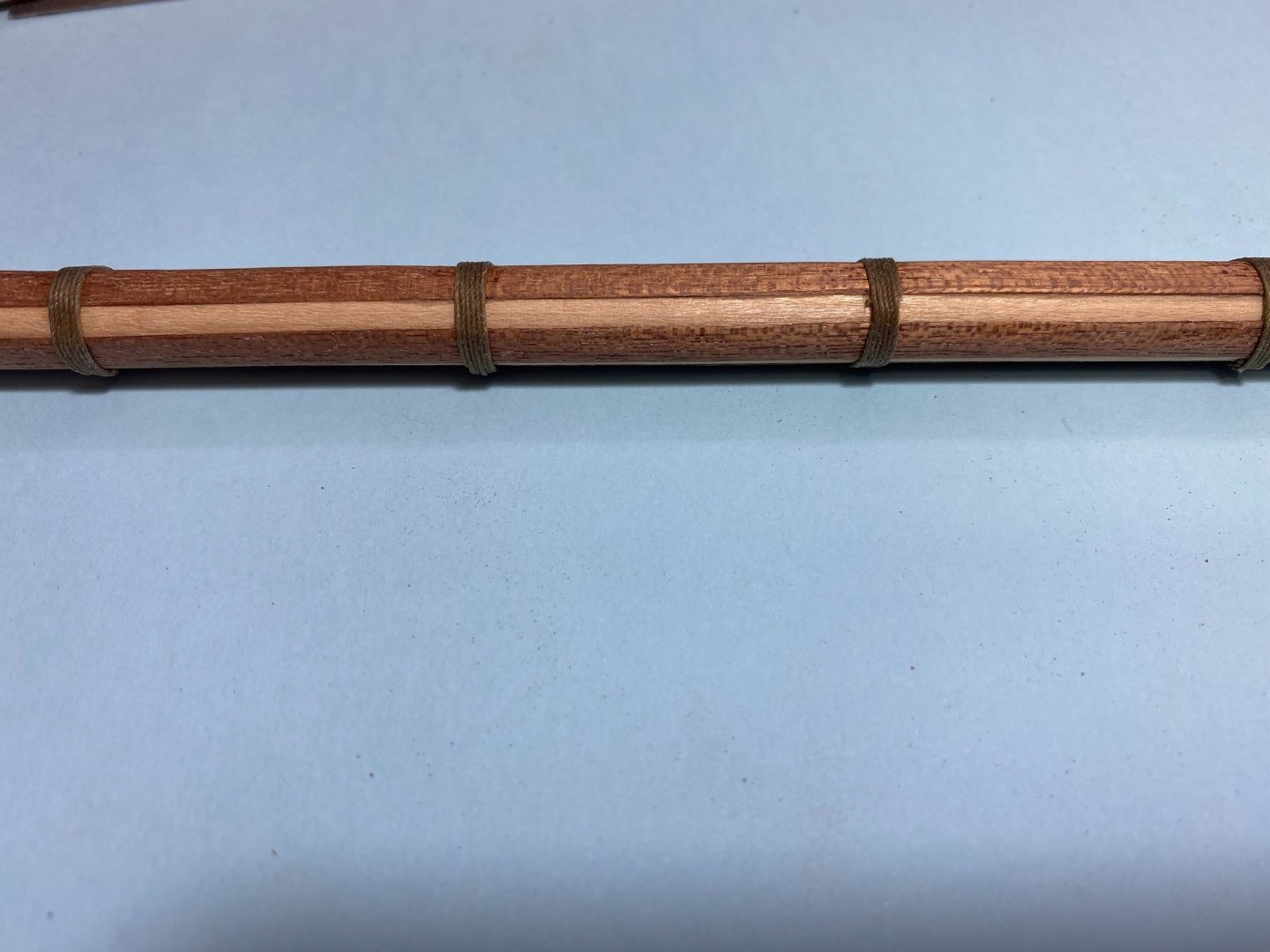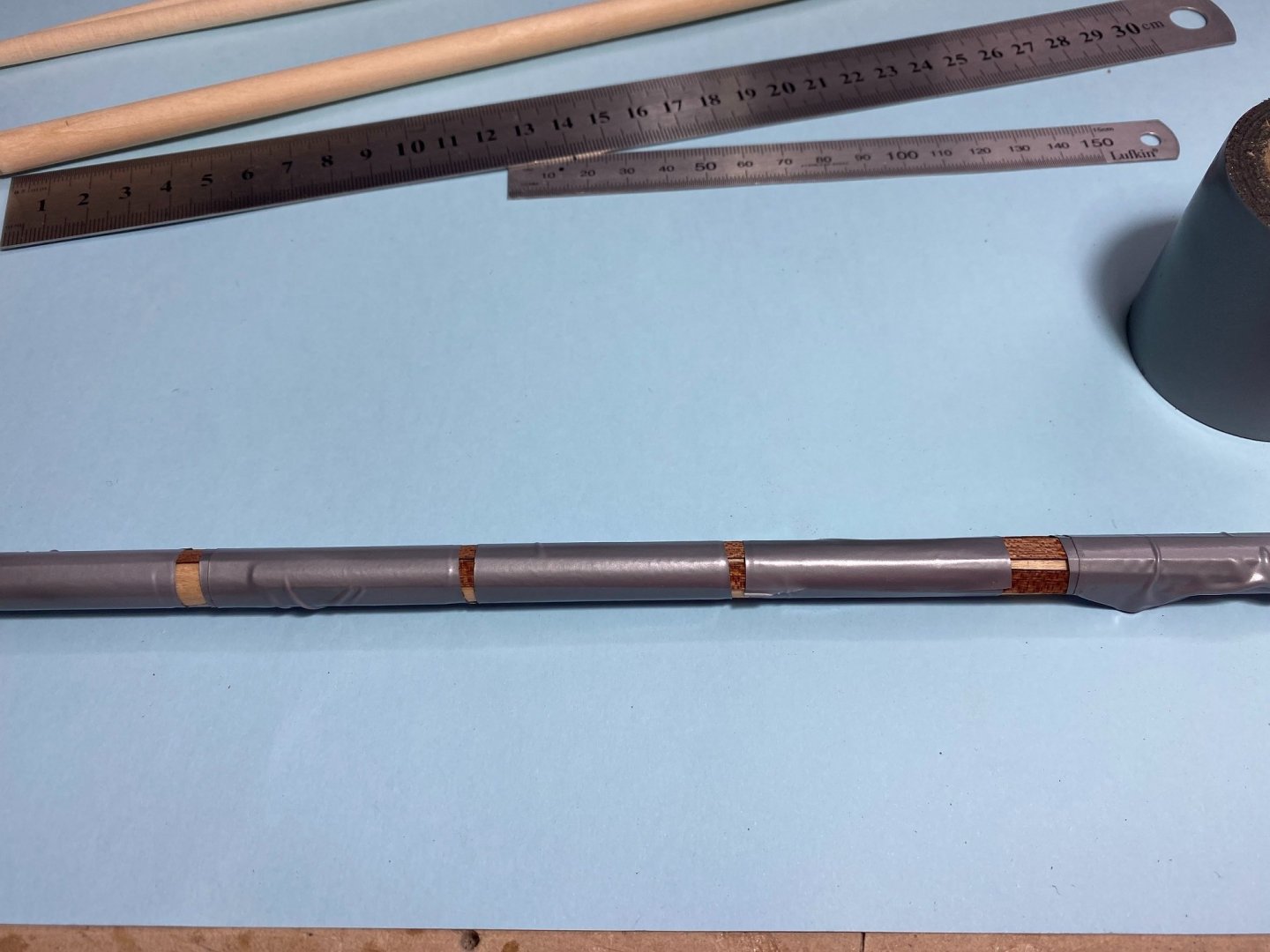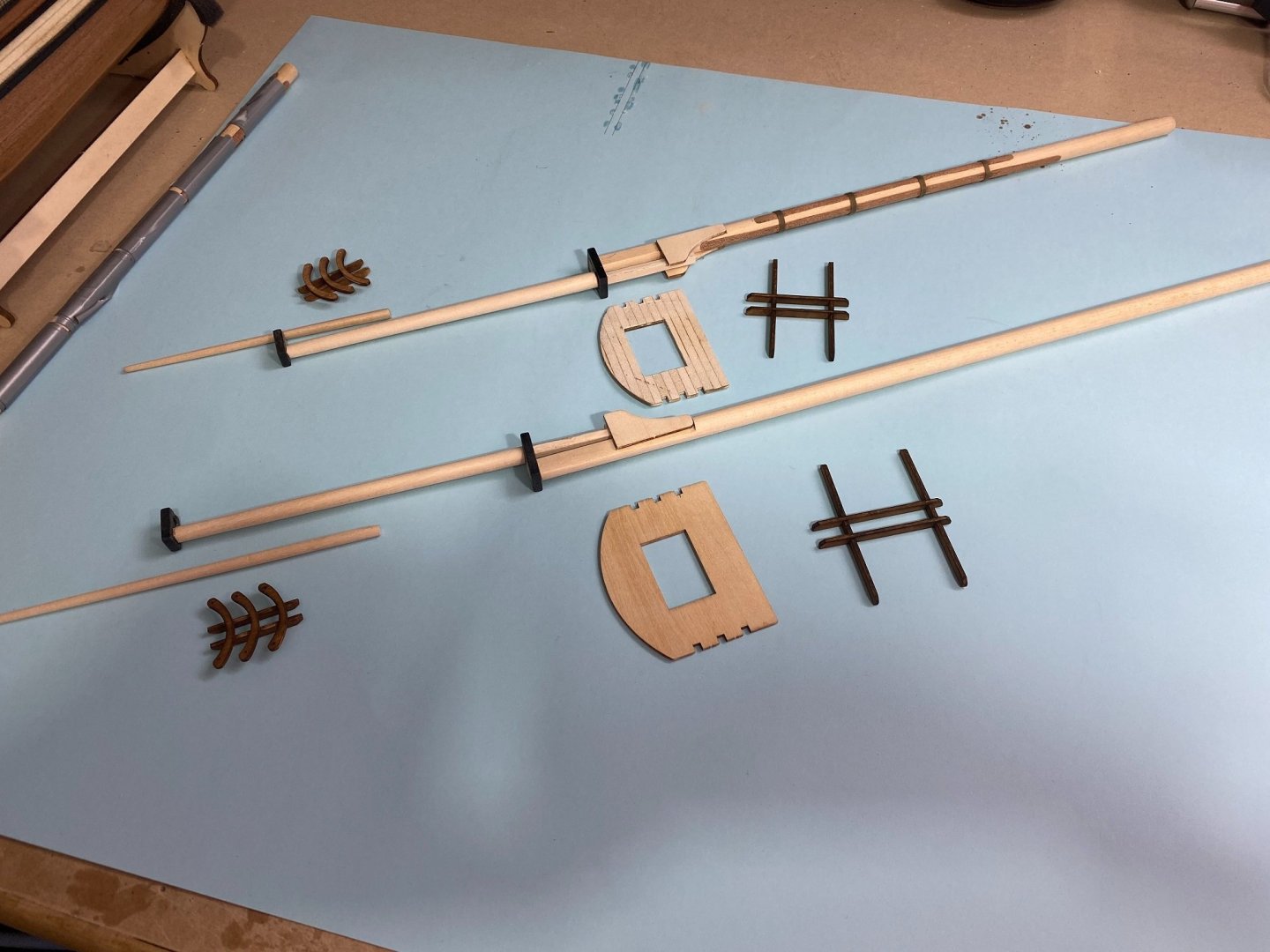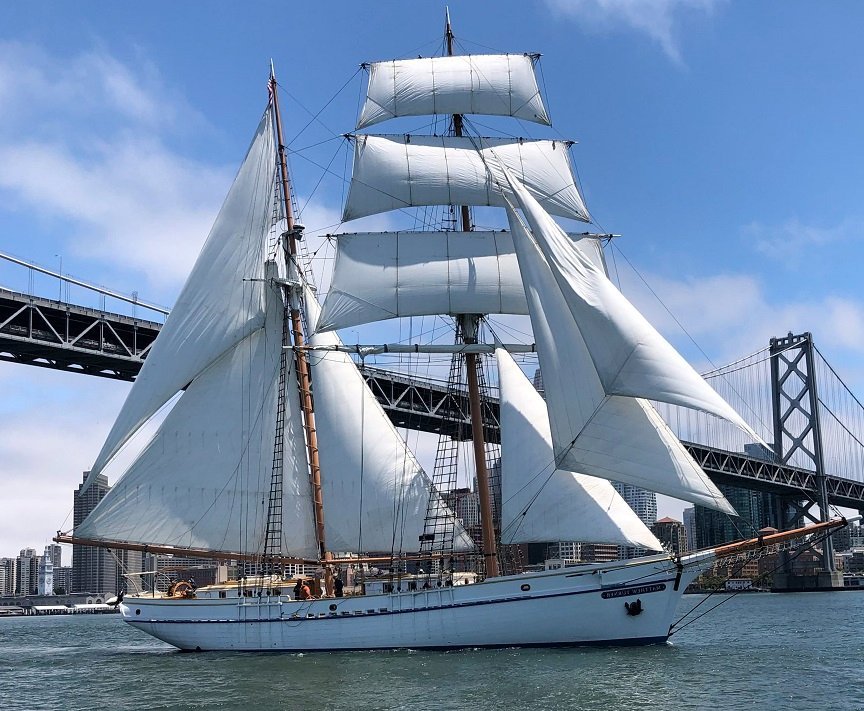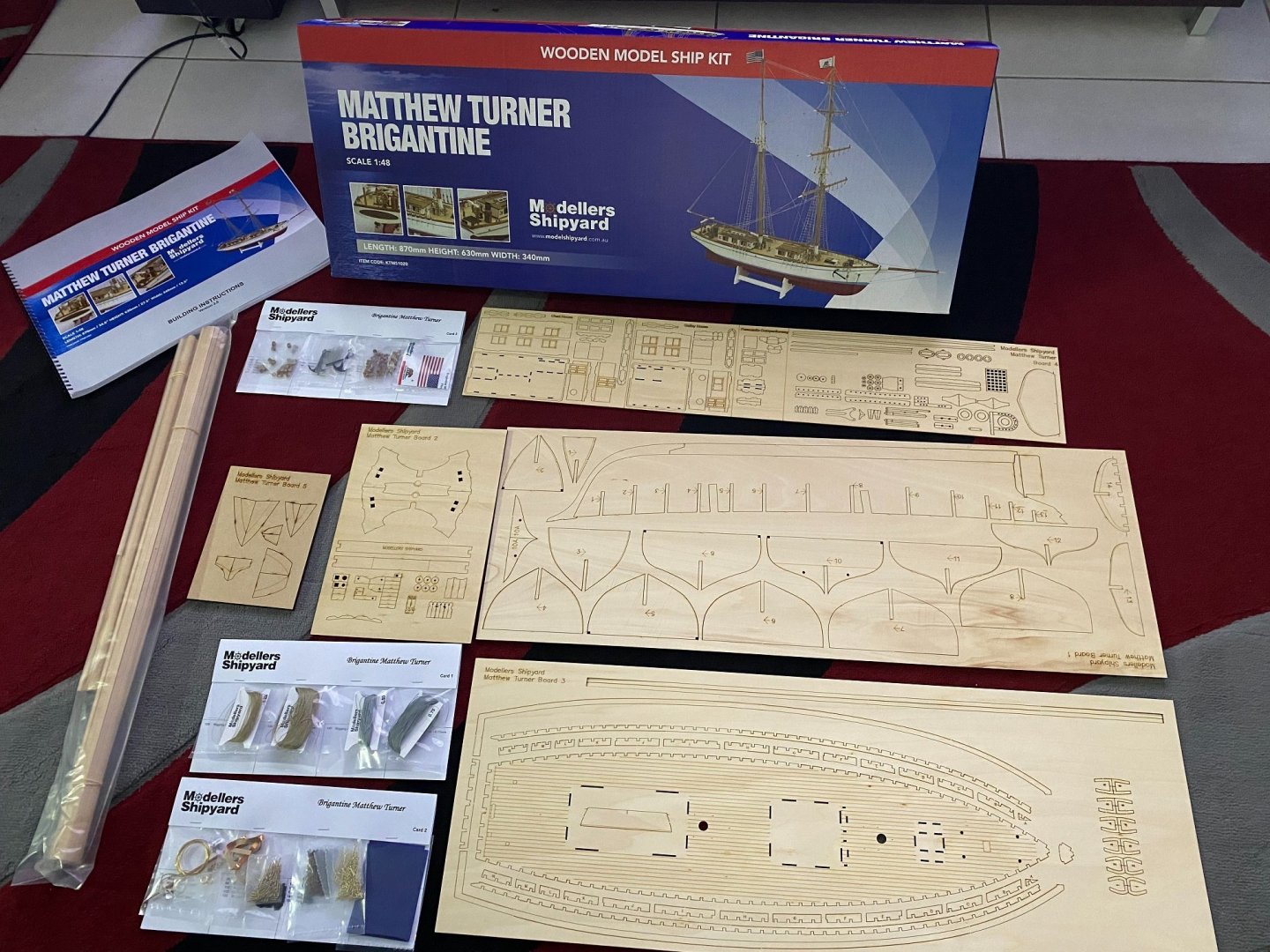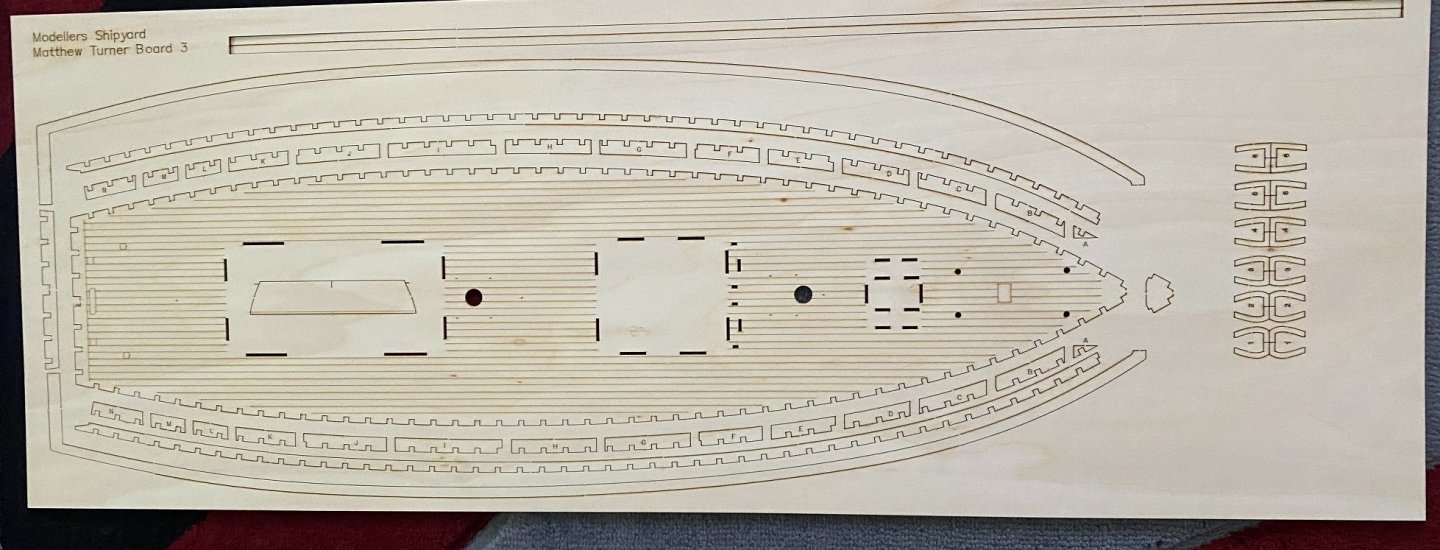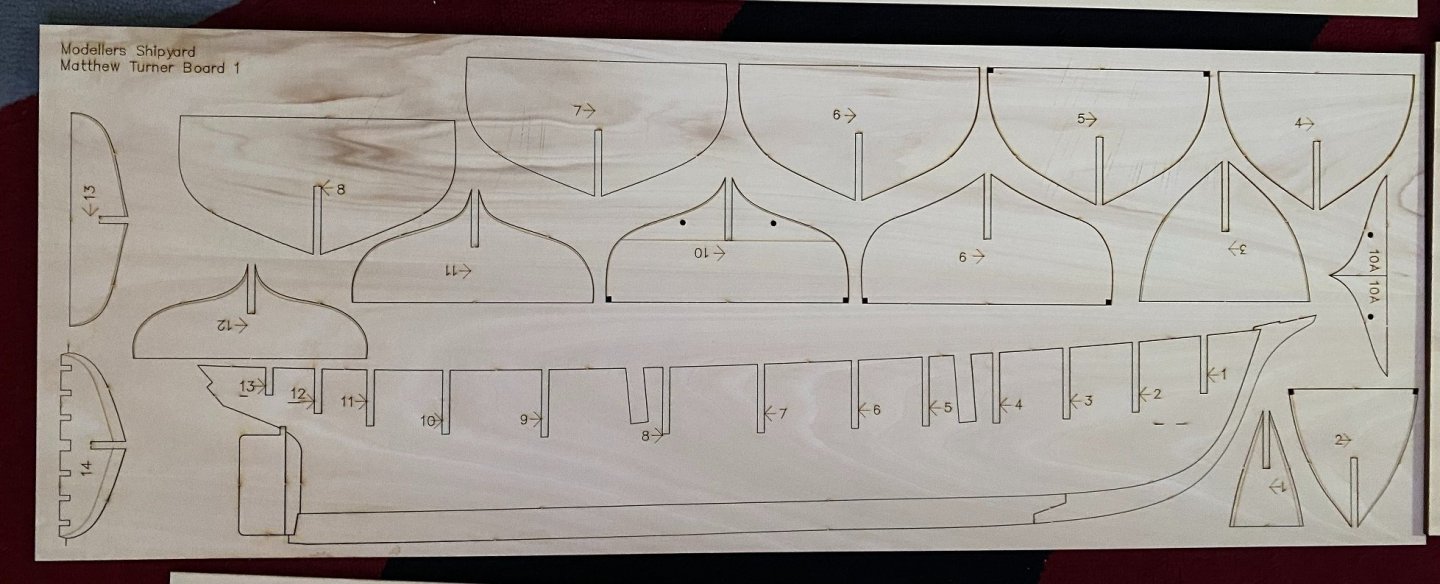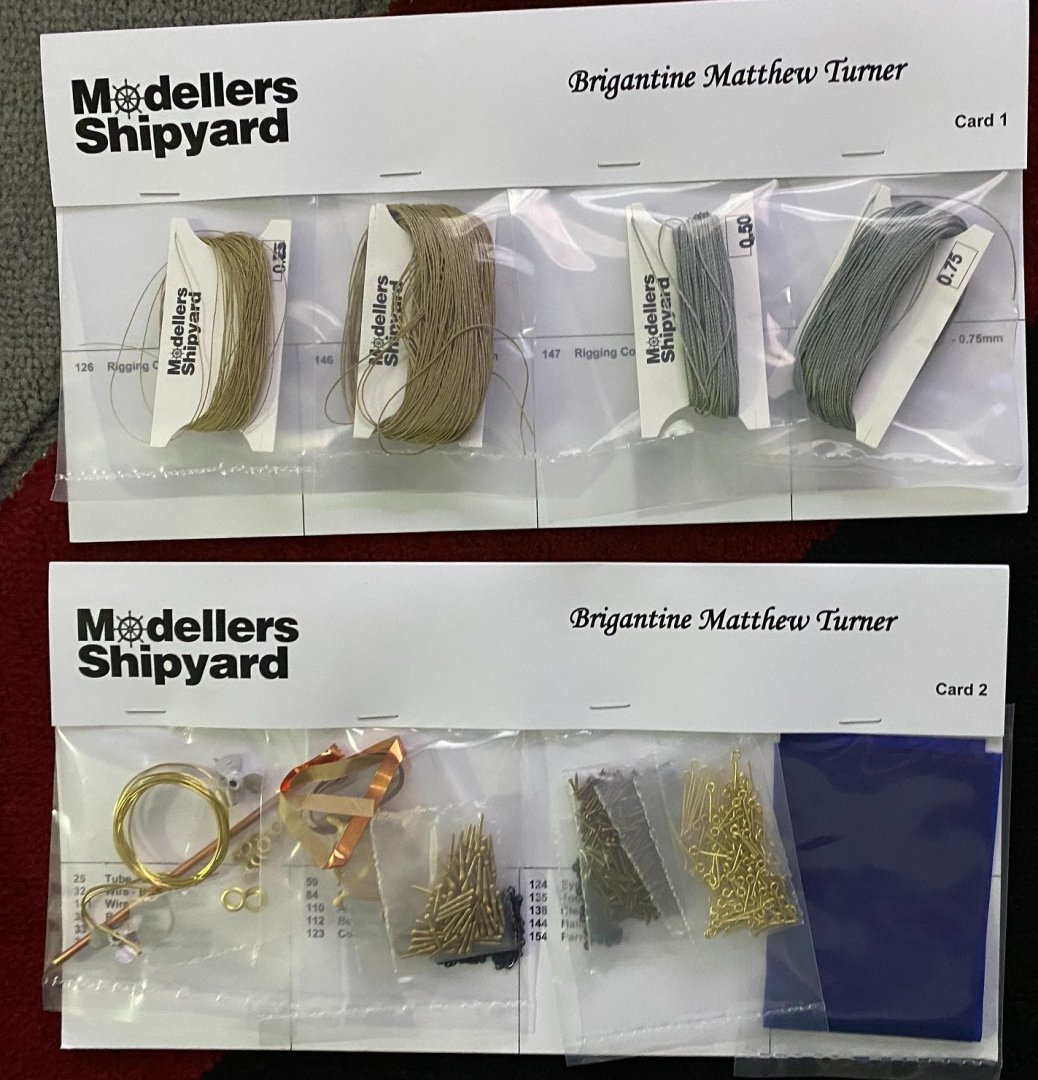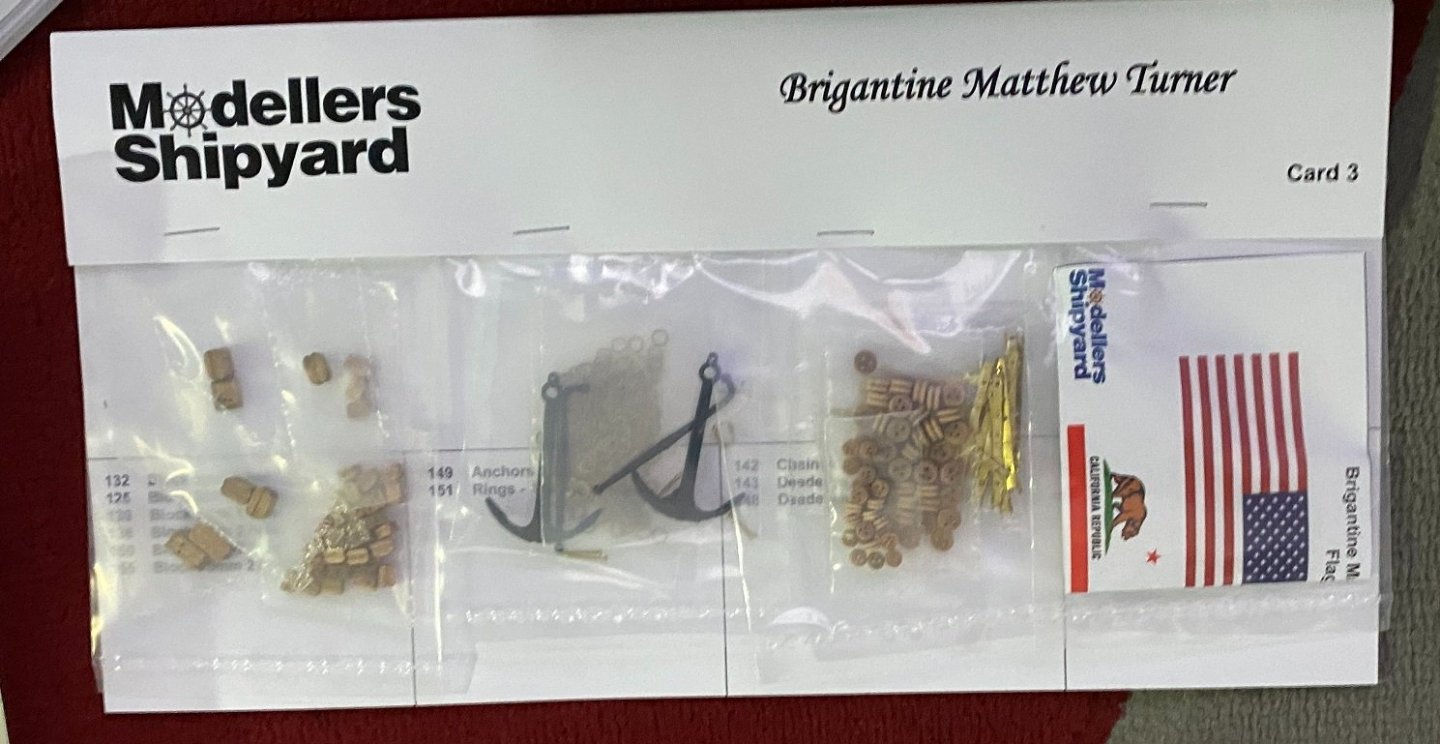-
Posts
61 -
Joined
-
Last visited
Profile Information
-
Gender
Male
-
Location
Perth WA
Recent Profile Visitors
-
 Scottish Guy reacted to a post in a topic:
Professional Building Slip - Hobbyzone
Scottish Guy reacted to a post in a topic:
Professional Building Slip - Hobbyzone
-
 Isaiah reacted to a post in a topic:
Perseverance 1807 by Mike Hunt - Modellers Shipyard - 1:48 scale - Colonial Brig - first build
Isaiah reacted to a post in a topic:
Perseverance 1807 by Mike Hunt - Modellers Shipyard - 1:48 scale - Colonial Brig - first build
-
 GrandpaPhil reacted to a post in a topic:
Perseverance 1807 by Mike Hunt - Modellers Shipyard - 1:48 scale - Colonial Brig - first build
GrandpaPhil reacted to a post in a topic:
Perseverance 1807 by Mike Hunt - Modellers Shipyard - 1:48 scale - Colonial Brig - first build
-
 Isaiah reacted to a post in a topic:
Perseverance 1807 by Mike Hunt - Modellers Shipyard - 1:48 scale - Colonial Brig - first build
Isaiah reacted to a post in a topic:
Perseverance 1807 by Mike Hunt - Modellers Shipyard - 1:48 scale - Colonial Brig - first build
-
 popeye the sailor reacted to a post in a topic:
Varyag 1901 by Valeriy V - FINISHED - scale 1:75 - Russian Cruiser
popeye the sailor reacted to a post in a topic:
Varyag 1901 by Valeriy V - FINISHED - scale 1:75 - Russian Cruiser
-
 Dave_E reacted to a post in a topic:
Perseverance 1807 by Mike Hunt - Modellers Shipyard - 1:48 scale - Colonial Brig - first build
Dave_E reacted to a post in a topic:
Perseverance 1807 by Mike Hunt - Modellers Shipyard - 1:48 scale - Colonial Brig - first build
-
 coxswain reacted to a post in a topic:
Gorch Fock by Mike Hunt - OcCre - 1:95
coxswain reacted to a post in a topic:
Gorch Fock by Mike Hunt - OcCre - 1:95
-
 Chook reacted to a post in a topic:
Perseverance 1807 by Mike Hunt - Modellers Shipyard - 1:48 scale - Colonial Brig - first build
Chook reacted to a post in a topic:
Perseverance 1807 by Mike Hunt - Modellers Shipyard - 1:48 scale - Colonial Brig - first build
-
 Eurus reacted to a post in a topic:
Gorch Fock by Mike Hunt - OcCre - 1:95
Eurus reacted to a post in a topic:
Gorch Fock by Mike Hunt - OcCre - 1:95
-
 BobG reacted to a post in a topic:
Gorch Fock by Mike Hunt - OcCre - 1:95
BobG reacted to a post in a topic:
Gorch Fock by Mike Hunt - OcCre - 1:95
-
06/09/21 Installed beams on BH’s that support mid deck also installed 2 sections of mid deck. 07/09/21 Installed last section of lower deck 02/10/21 Cut and prepared planks for lower deck 07/10/21 - 19/10/21 Continued on and off planking this lower deck. 20/10/21 Completed planking, trimmed edges and started sanding. Applied sand n seal and sanded some more. Applied faux nail holes to planks. Applied first coat of varnish 21/10/21 Sanding and varnishing of lower deck 22/10/21 More sanding and varnishing of lower deck 23/10/21 Started work on deck houses. Sanded and gave first coat of primer. HTD: 33 Bit of a gap where BH meets deck Final section of lower deck about to be installed Lower deck complete. Getting planks ready for lower deck Lower deck planking complete Started to prepare the deck houses So making a bit of progress here. Looking forward to getting the deck houses finished so I can complete the two upper decks as they protrude out over the deck houses. I didn't come across any issues or hassles in this last bit of progress other than where the deck did not come out to be flush with a bulkhead so I built up the deck edge with some scrap planking wood and bobs your uncle, or aunt, as may be the case in this crazy world of gender misappropriation and confusion lol.
-
01/09/21 - 02/10/21 Continued deck planking 06/10/21 Glued deck in place 07/10/21 Faired the hull 08/10/21 Glued bow and stern blocks in place 09/10/21 Continued sanding and shaping bow and stern blocks. Shaped transom and transom strengthener and glued together. 10/10/21 Glued transom in place, sanded deck and applied first coat of varnish 11/10/21 - 13/10/21 More sanding and varnishing 16/10/21 Fitted top temporary planks on P & S and glued 3 planks below temp plank on both sides. 17/10/21 Fitted 3 spacers midship and another temp plank below spacers to define planking section on P & S 21/10/21 Sanded back deck and applied faux nails in deck planking and gave a fresh coat of varnish 22/10/21 Another light sanding of deck and another coat of varnish. 23/10/21 Final varnish HTD: 30 Deck planking continues Planking complete and glued in place Fairing the hull Bow blocks faired First temporary planks in place First plank glued in place with the help of planking clamps First three planks glued in place along with three temporary spacers and a temporary plank to define that planking section. Some exciting progress on this build for me. For some reason I really enjoy and relish the challenge of planking. So as mentioned earlier this kit was supplied with planks etched into the deck, I don't know why they couldn't have etched in butt joints and nail points. To be honest, even if they did I would have still preferred to plank it as I would any other deck. Anyway, the planking went without hitch and the only mistake I made was not gluing the deck onto the hull before commencing the planking. You see I wasn't able to get the deck to hold firm with clamps and weights alone and I had to use pins which of course leave pin holes. Mixed some sanding dust with PVA and filled same. With lots of sanding and several coats of varnish I think I might just have gotten away with it. With the deck finished I started to fair thje hull. Now these bulkheads came with laser etched fairing lines and it was suggested in the manual to fair these prior to installation but I chose to install first and fair later. I found it very easy to fair and I still found the fairing lines helpful as a guide. Overall the procedure was relatively easy for me. On to the planking and the first temporary plank was a doddle to install as one might expect. The next plank down I decided to try out the new planking clamps I got from Modelers Shipyard. Well the concept is great I think but in their current iteration, useless. Too fiddley and because the thumbscrew is nylon coated it shreds your fingers to bits, absolutely not worth the pain. If the thumb screw was bigger and had a more finger friendly surface then they might be the ducks nuts. So the spacers and temp plank are installed to define the next planking section which will see me take three planks down to two in that space. Only used wedges and fillers on the Perseverance so looking forward to this new challenge which I should be starting in the coming week/s
-
06/09/21 Painted mast top caps again 08/09/21 Varnished masts 19/09/21 Cut and shaped all yards and stunsail booms 02/10/21 Painted yards 08/10/21 Assembled main yard and glued on strengtheners in middle of yard. 09/10/21 Sanded main yard strengtheners, glued stunsails in place, bound and varnished entire yard assembly. 17/10/21 Finished assembling three remaining yards 22/10/21 Started rigging yards and completed Fore Top Yard. 23/10/21 Completed rigging fore top and main yards HTD: 351 Varnished the masts Yards cut and shaped Yards painted Main yard assembled with center strengtheners and stunsails added Fore top and main yards complete So there has been a lengthy spell since my last installment partly due to spending equal amounts of time on my other two builds and a small measure of couldn't be stuffed. So no real challenges in this last progression. Watching lots of videos to help with techniques for rigging and the like. Despite having a mini lathe it was still tricky getting those yards shaped nicely. I did find it a struggle to get the stunsails nice and straight and square to the yards. You see pictures of them everywhere and I think, that doesn't look to difficult but alas.......... I'm hoping to finish the two remaining yards for the main mast next week and then the installing of the masts and mast rigging commences. I am really looking forward to rigging the mast as it somehow seems like a milestone of sorts. I suspect however that reality will soon wipe the air of excitement from me. Other confusing contradictions between manual and instructional video had me a little flustered, such as, video states that all pendants should be 75mm but the manual states 45mm, I settled for 55mm as I couldn't see that it was going to make too much difference other than to "historical accuracy".
- 47 replies
-
- Modellers Shipyard
- Perseverance
-
(and 1 more)
Tagged with:
-
 Mike Hunt reacted to a post in a topic:
Perseverance 1807 by Mike Hunt - Modellers Shipyard - 1:48 scale - Colonial Brig - first build
Mike Hunt reacted to a post in a topic:
Perseverance 1807 by Mike Hunt - Modellers Shipyard - 1:48 scale - Colonial Brig - first build
-
06/09/21 Painted mast caps again 08/09/21 Varnished masts 19/09/21 Cut and shaped all yards and stunsail booms HTD: 342 Masts varnished Yards cut and shaped Not a lot of progress since my last installment as I took a week off to travel north to visit WA's wildflowers. Tis the season to be sure and I thought I would beat those pesky kids on skewell holidays in a week or so. Anyway, finally finished the masts and varnished them with a satin varnish that I favour. Masts just sitting loosely in their respective locations. Overall I am not happy with them in terms of symmetry but keep reminding myself this is a steep learning curve. That excuse is starting to sound like a cop out. I cut all the yards to length as well as the stunsail booms and shaped them all using my little Proxon mini lathe. I didn't use the chisels just various grades of sand paper so truth be told I could just as easily used a power drill. Next week should see me start assembling the yards and fitting the blocks and rigging to same.
- 47 replies
-
- Modellers Shipyard
- Perseverance
-
(and 1 more)
Tagged with:
-
 Mike Hunt reacted to a post in a topic:
HMS EURYALUS by Matiz - FINISHED - scale 1:56
Mike Hunt reacted to a post in a topic:
HMS EURYALUS by Matiz - FINISHED - scale 1:56
-
 Mike Hunt reacted to a post in a topic:
HMS EURYALUS by Matiz - FINISHED - scale 1:56
Mike Hunt reacted to a post in a topic:
HMS EURYALUS by Matiz - FINISHED - scale 1:56
-
Hi Bob, well I bought it years ago from KMart or Target or one of those, the equivalent to WallMart in your neck of the woods I guess. Just a cheap domestic appliance that appeared on one of those infomercials and in a moment of weakness, well................. It only cost $30 or $40 AU and it is virtually a steam iron in Darth Vader clothing. I purchased it to try and remove mould/mildew from hard to reach areas and it has sat in its box since then. But your comment made me think about it and I might try using it when it comes time to persuade some planks to bend.
-
 Mike Hunt reacted to a post in a topic:
Endurance by HakeZou - FINISHED - OcCre - 1:70
Mike Hunt reacted to a post in a topic:
Endurance by HakeZou - FINISHED - OcCre - 1:70
-
 Mike Hunt reacted to a post in a topic:
Endurance by HakeZou - FINISHED - OcCre - 1:70
Mike Hunt reacted to a post in a topic:
Endurance by HakeZou - FINISHED - OcCre - 1:70
-
25/08/21 Installed first bulkhead BH 14 28/08/21 Removed BH 14 and proceeded to straighten false keel. 30/08/21 Installed BH 16 Added aluminium angle to help straighten false keel 31/08/21 Installed BH 15 01/09/21 Installed BH 14 02/09/21 Installed BH 13 03/09/21 Installed BH 12 & 11 04/09/21 Installed BH 10 - 6 05/09/21 Installed BH 5 & 4. Also installed stern frames 17 & 18 and bowsprit deck 19 & 20 as well as lower deck. HTD: 19 Vertical curvature in false keel fore and aft I countered the curvature by fitting some aluminium angle braces Using my little steaming machine I steamed those areas around the braces that were badly curved. First couple of BH's fitted Movin' on down the line All BH's in place as well as bowsprit deck Straighteners Showing lower deck fitted. Well! Where do I start? I thought I had mentioned earlier that when I first did a stock take I had noticed after cutting out the false keel that it had a significant warp. I put the two pieces in a shallow bath of hot water and allowed to dry under the weight of a few dozen floor tiles for a couple of weeks. When I removed the tiles I saw that the warp was far less pronounced than at first and I wondered if it would straighten as I proceeded to insert the bulkheads. Anyway a week or so passed and I glued the two sections together along with the strengtheners at the join points. A few days later as I was preparing to fit the false keel in the building slip I noticed that a significant curve had developed vertically on both the fore and aft sections (see above pics). I thought or hoped that fitting the bulkheads would straighten it out so I proceed to fit and glue the first BH14 and waited a day or so to find that it mad no difference. I cut BH14 out and got some aluminium angle and bolted the pieces through the false keel which worked a treat. I fitted several of these pieces of aluminium to the worst affected areas (see pics above). Obviously some of them will get in the way when it comes to planking etc but I will adjust or remove them as needed otherwise I will just leave them there. I also tried to place these angle pieces against the BH's so as to give further strength to those joints. And so, in terms of the quality of the material and laser cutting, I am less than impressed. A lot of the laser cutting is not square as I think is illustrated in a previous post and I was not happy with the way the keel curved and warped. Anyway, all the bulkheads are in place along with the lower deck and when removed from the build slip everything is straight as a die and all BH's are square. The only other area of concern I have is there seems to be a little inconsistency with the checkouts for the beams on the mid section BH's. These inconsistency's were more apparent when a straight edge was held atop them. Anyway, I will have a closer look next week as I believe that is one of the next steps.
-
30/08/21 Silver Ash arrived so started cutting planks 31/08/21 - 02/09/21 Deck planking HTD: 15 Jig for cutting planks Planks ready to go Deck planking commences Planking continues OK, so not a lot of progress here since last installment. As I think I mentioned in an earlier post this kit comes with a deck that has laser etched planking which did not appeal to me. Perhaps a way to keep costs down. So I ordered some Silver Ash to plank it myself. As there were no instructions on deck planking I decided to cut them to 150mm lengths and stagger them at 50mm intervals. On my other build I used 100mm lengths also staggered at 50mm. I think it will look ok and not out of scale, as they are both similar size it will be interesting to see the difference side by side. On the Perseverance I used contact cement for the deck planking which can be unforgiving if one is not precise when laying the planks but the end result is close to perfect in my opinion. The contact cement method, for me anyway was much slower and laborious as I only prepared one plank at a time where the experts prepare six or more at a time. And so this time about I decided to use PVA. Much much easier to work with BUT!!! when wiping excess glue with a damp cloth you also smear the graphite from the edges which does not look particularly attractive. I am hoping that on completion I will scrape down the deck instead of sanding and that this will reduce the contaminated graphite. Looking forward to completing the decking and then onto the fairing process I think
-
20/08/21 Added strengtheners to foremast 21/08/21 Started preparing fore and main mast tops 22/08/21 Shaped top gallant for main mast. Made and stained cross trees and trestle trees. Put on rings onto cargo hatch. Cut, shaped and steamed main mast strengtheners and taped them to a spare piece of dowel 23/08/21 Fitted steamed mast strengtheners to main mast 27/08/21 Silver Ash arrived so continued planking top masts fore and main 28/08/21 Trimmed and cleaned planking to top mast platforms 29/08/21 Added face strips and anti-slip strips to top mast platforms. Glued tree supports under them. 30/08/21 Glued mast tops in place and drilled 12 holes on each for crows feet. 31/08/21 Glued on mast caps, remade cross trestle, prepared blocks for cross trestles 01/09/21 Assembled masts and started preparing blocks for masts 02/09/21 Prepared fore and main mast blocks 03/09/21 Made the rest of the mast blocks 05/09/21 Fitted mast blocks to masts. HTD: 337 Masts underway Black rings added to cargo hatch's Masts with some of the blocks in readiness Blocks ready for attachment Masts assembled but not glued to deck yet. Blocks attached Well a busy two weeks found me learning lots more lessons. Some of these lessons will stick others I may have to relearn. The Silver Ash arrived which allowed me to continue finishing the top mast planking and also got started deck planking on one of my other builds. I also finished the trim on these top masts as well as the cross trees and trestles. Wasn't very happy with the cargo hatch rings blackening process using "black it". Seems I skipped a very crucial step because I thought the brass rings were clean enough. Turns out, oxidation and other contaminants can hinder the blackening process. So with the eye pins I washed them thoroughly with Isopropyl first and the end result was perfect. Another lesson learned. Getting platforms, cross trees and trestles square, straight and level on round masts was not something that came easily to me and I suspect it is something that only experience and practice will improve on. It's amazing how a different day, different light can show up the imperfections in these fixtures. Overall I was happy with my progress since last installment, I will varnish the masts tomorrow before moving on to the yards and booms.
- 47 replies
-
- Modellers Shipyard
- Perseverance
-
(and 1 more)
Tagged with:
-
 Mike Hunt reacted to a post in a topic:
Endurance by HakeZou - FINISHED - OcCre - 1:70
Mike Hunt reacted to a post in a topic:
Endurance by HakeZou - FINISHED - OcCre - 1:70
-
 Mike Hunt reacted to a post in a topic:
Endurance by HakeZou - FINISHED - OcCre - 1:70
Mike Hunt reacted to a post in a topic:
Endurance by HakeZou - FINISHED - OcCre - 1:70
-
 Mike Hunt reacted to a post in a topic:
Endurance by HakeZou - FINISHED - OcCre - 1:70
Mike Hunt reacted to a post in a topic:
Endurance by HakeZou - FINISHED - OcCre - 1:70
-
Can I ask, do you stain and or varnish your blocks and dead eyes etc or leave them au natural? Loving your progress and attention to detail.
-
 Mike Hunt reacted to a post in a topic:
Endurance by HakeZou - FINISHED - OcCre - 1:70
Mike Hunt reacted to a post in a topic:
Endurance by HakeZou - FINISHED - OcCre - 1:70
-
 Mike Hunt reacted to a post in a topic:
Endurance by HakeZou - FINISHED - OcCre - 1:70
Mike Hunt reacted to a post in a topic:
Endurance by HakeZou - FINISHED - OcCre - 1:70
-
In the words of Monsieur Heisenberg, "Say my name!". It would appear I stayed up much later than you trying to come up with a name Thanks for the warm smoke
- 47 replies
-
- Modellers Shipyard
- Perseverance
-
(and 1 more)
Tagged with:
-
14/08/21 Removed all bulkheads and false keel and sanded clean 15/08/21 Dry fitted all bulkheads to false keel also glued BH's 1 - 5 16/08/21 Glued BH's 6 - 11 17/08/21 Finished gluing bulkheads. Shaped bow and stern blocks. Glued on under-deck supports. 18/08/21 sanded and cleaned deck edges HTD: 10 Off and running. A few more in place All in All BH's nice and square Bow and stern blocks shaped and ready to be glued in place Under deck frame supports in place Just a dry fit of the deck. Well what a hugely exciting start, for me, on this beautiful boat. I was blown away with the quality of the bulkheads and false keel compared to my other build, the Perseverance, which was from the same manufacturer. With this kit every single bulkhead was a perfect fit and none required reducing or building up. The lines seemed to be very true indeed. The BH's were such a perfect fit that the were all square requiring no assistance. None the less I still used a couple of pieces of square aluminium box section and clamped each BH in turn. Very very happy with end result. It's all the more interesting having the other build from the same manufacturer for comparison. You may notice that there is a very slight curve in the false keel which I believe will disappear after the deck is attached. I did a trial fit of the deck and it fitted beautifully. Those under deck supports have gaps in them helping the alignment to the bulkheads to be more accurate. I decided not to use my new HZ building slip as I am keeping it for the Gorch Fock build not to mention the fact that it is rather large and unwieldly. I will start throwing BH's into that model shortly. You will notice in the photos above that the forward and aft BH's have score lines to help with fairing. The manual suggests that these BH's are faired before being glued in place. Well this just didn't feel right to me, despite my lack of experience I opted to glue them in place first and I will still use those helpful lines as a reference when I start fairing. I hope I haven't jinxed myself going out on my own like that so early on. The other "going-it-alone" decision I have made is to plank the deck. As clever and helpful as the plank etching might be, I simply just don't like it and have ordered forty odd strips of .6mm x 4mm Silver ash which has a beautiful grain and awesome finish when varnished, see some of the pics in my Perseverance build. Anyway, I am not expecting their arrival for another few days so build on hold till then. I am hoping that this extra .6mm isn't going to be detrimental to the rest of the build.
-
16/08/21 Fitted and rigged lifeboats to deck 18/08/21 Fitted and rigged jollyboat to transom 19/08/21 - 22/08/21 Started work on fore and main masts HTD: 325 Lifeboats rigged and ready Black rings added to hatch covers Mast strengtheners attached and bound to fore mast Mast strengtheners, after steaming, being prepared for main mast. Temporarily taped to a spare piece of dowel. Mast production in full swing, nothing glued yet, final positioning a way off yet So this week saw me make a start, finally on to the masts. Again, much easier watching the experts doing it than doing it myself. I found it a challenge, and will need more practice with cutting/checking rectangular and square, lets call them tenons, and keeping them true to each end. Even something as deceptively simple as gluing the mast strengtheners to the mast was challenging. I used PVA but found that the .5 x 5mm didn't want to bend around the dowel. So using a series of bulldog clamps down each side saw the laminate split down the middle. I poured thin CA down the crack and sanded back which completely hid the crack. I also noticed that the strips tended to wave about the place and didn't present a true line. I think perhaps CA might have been a better choice of glue for this task. I found the binding of the strips to the mast to be a very easy task I have steamed and taped the next set of strips around a spare piece of dowel (see pic above). I am hoping this will offer easier placing on the main mast in conjunction with the use of CA instead of PVA. The topmast platforms call for planking top and bottom and unfortunately I have run out of Silver Ash which is what was used on the main deck. Expecting it to arrive any day now. I have stained the cross trees and trestle trees that lay beneath the platforms, oak, to offer a little contrast to the paler timbers and also to try and help mask the ply edges. Hopefully next week I will see this planking finished and the platforms and masts finished with blocks attached etc all ready for some sealing and satin varnishing.
- 47 replies
-
- Modellers Shipyard
- Perseverance
-
(and 1 more)
Tagged with:
-
09/08/21 Working on pin rails. Stained and varnished pins and glued into pin rails 10/08/21 Glued all pin rails in place as well as the belfry 11/08/21 Started work on lifeboat hulls 12/08/21 Painting of lifeboat hulls 14/08/21 Lifeboat topcoats also stained varnished lifeboat decks and accessories 15/08/21 Assembled lifeboats and rigged 4 blocks in preparation of rigging jolly LB to davits. HTD: 312 Pin rails glued in place along with the belfry Lifeboats ready to be fitted. Blocks are for rear LB suspended from davits. Fairly easy week. lifeboats were not much of a challenge. I airbrushed the plastic hulls with primer and top coat. Stained and varnished the decks, rudders and oars. Also tried to give oars a rounded finish instead of the square laser-cut finish. All ready to be installed next week. While the pin rails were relatively easy to assemble it has to be said I don't like working with 2mm ply. The pre cut pieces had the holes drilled for the pins but these were not big enough so I had to drill them bigger. This procedure tore out bits of the ply and left unsightly gaps to me. I think in future I will manufacture my own parts from solid wood instead of the thin ply. Looking forward to finishing the lifeboats and starting on masts and yards.
- 47 replies
-
- Modellers Shipyard
- Perseverance
-
(and 1 more)
Tagged with:
-
Hi and welcome to my second build, the brigantine “Matthew Turner” from Modellers Shipyard. I have not yet completed my first build but wanted some variety and experience building a next-level-up model, as it were. A little history about the Matthew Turner: (Taken from Modellers Shipyard website) Launched at Sausalito, California in April 2017 the brigantine Matthew Turner is the largest wooden sailing ship to be built in the San Francisco Bay area in more than 100 years. Built of Douglas Fir and Oregon white oak. The Matthew Turner has a length of 132 feet (40m), a beam of 25feet (7.6m) and a displacement of 175 tons (160 tones) The ship pays homage to the ships namesake, Matthew Turner (June 17, 1825 - February 10, 1909) was an American sea captain, shipbuilder and designer. He constructed 228 vessels, of which 154 were built in the Matthew Turner shipyard in Benicia, California. He built more sailing vessels than any other single shipbuilder in America and can be considered the "grandaddy" of big time wooden shipbuilding in the US Pacific coast. The main inspiration behind building the Matthew Turner was the Turner designed brigantine Galilee, launched in 1891. Galilee spent much of her career as a packet, making swift passages back and forth between San Francisco and South Sea ports. She ended her days on the Sausalito mudflats - Galilee Harbour is named for her - but her stern is preserved at Fort Mason and her stem at Benicia. This model of Matthew Turner is expertly designed with a keel and bulkhead construction. A unique feature of this kit is that it has fairing laser score lines on the bulkheads to make the fairing accurate and symmetrical. All laser cutting is clean and crisp and all parts and fittings are of the highest quality. The English building instructions provide highly detailed step-by-step descriptions supported by colour photos of the model being built. The model is single layer planked. Why did I choose this model? Several reasons: It's a very handsome ship I have a penchant for sail training ships It was from the same manufacturer as the brig Perseverance which I am currently building and I am very happy with the quality of that model. It is a next-level-up (Lv3) which I felt I needed to undertake before immersing myself in the Gorch Fock (Lv4). The support from Modellers Shipyard was/is excellent on my current build. The availability of the 4 DVD set of instructional videos is a huge bonus for this novice builder Because this ship is so new, there is an endless supply of photos, videos and all sorts of reference material available all over the NET It was on sale, yesssssssss 🙂 Cant say I like the laser etched deck planking, I rather enjoyed doing my own planking. Notice the fairing lines laser cut into some of the bulkheads. I don't know that it is a particularly unique feature as I seem to recall having read about them previously. I have noticed that some of the smaller parts like blocks, pulleys and deadeyes are of a much higher quality than say those supplied with the OcCre Gorch Fock. So that's the kit and I hope to be setting sail with it in the coming week For anyone interested in the real deal, here is an excellent starting point from Call of the Sea
About us
Modelshipworld - Advancing Ship Modeling through Research
SSL Secured
Your security is important for us so this Website is SSL-Secured
NRG Mailing Address
Nautical Research Guild
237 South Lincoln Street
Westmont IL, 60559-1917
Model Ship World ® and the MSW logo are Registered Trademarks, and belong to the Nautical Research Guild (United States Patent and Trademark Office: No. 6,929,264 & No. 6,929,274, registered Dec. 20, 2022)
Helpful Links
About the NRG
If you enjoy building ship models that are historically accurate as well as beautiful, then The Nautical Research Guild (NRG) is just right for you.
The Guild is a non-profit educational organization whose mission is to “Advance Ship Modeling Through Research”. We provide support to our members in their efforts to raise the quality of their model ships.
The Nautical Research Guild has published our world-renowned quarterly magazine, The Nautical Research Journal, since 1955. The pages of the Journal are full of articles by accomplished ship modelers who show you how they create those exquisite details on their models, and by maritime historians who show you the correct details to build. The Journal is available in both print and digital editions. Go to the NRG web site (www.thenrg.org) to download a complimentary digital copy of the Journal. The NRG also publishes plan sets, books and compilations of back issues of the Journal and the former Ships in Scale and Model Ship Builder magazines.



